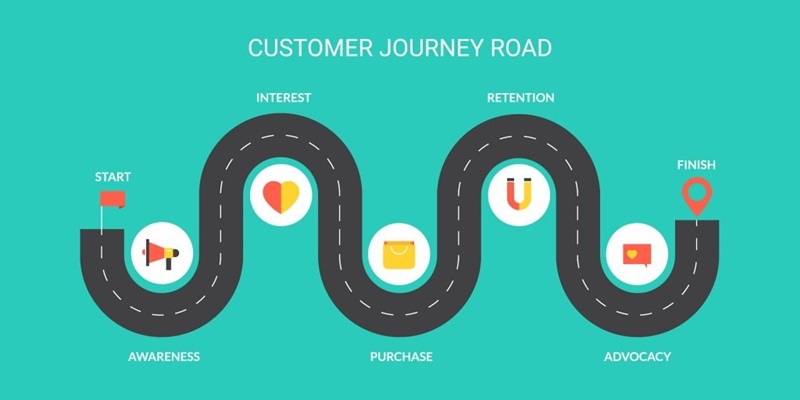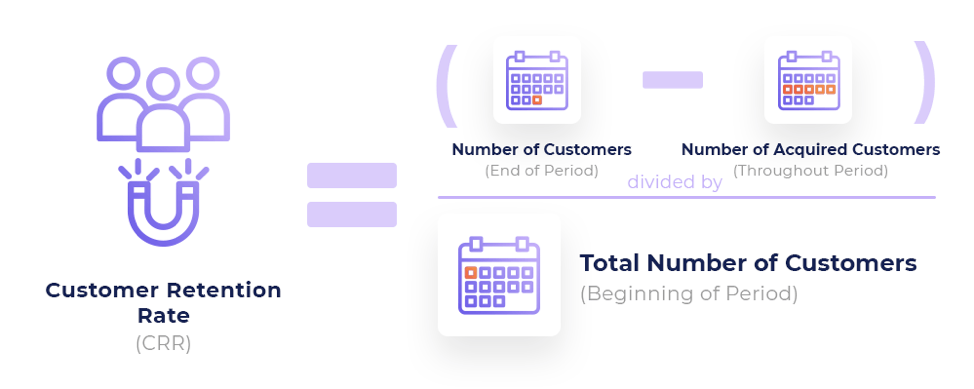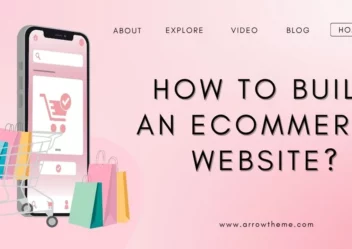Consumer Journey Map: How to Build, Advantages & Examples
Nowadays, consumers are flooded with choices for nearly every product. Drawing attention to your online store is more challenging than ever. With so many brands vying for clicks, marketers need to go beyond surface-level tactics and truly understand how consumers think, feel, and act throughout the buying process.
One powerful way to gain this insight is by creating a consumer journey map – a visual tool that captures each step a customer takes, from first awareness to final purchase (and beyond). In this blog, ArrowTheme will break down what a consumer journey map is, show you how to build one step by step, highlight the advantages it brings to your marketing strategy, and provide clear, real-world examples to guide your approach.
Claue – Clean and Minimal Magento Theme
We provide an amazing Magento theme with fast and responsive designs. Let’s find out!
What Is a Consumer Journey Map?
The consumer journey map is a visual representation of the steps a customer takes to achieve a specific goal related to your business, whether it’s purchasing a product, signing up for a newsletter, or reaching out for support.
A typical consumer journey is broken down into smaller stages, each representing key moments of interaction between the consumer and your brand. These stages are analyzed to better understand customer behavior, motivations, and pain points. For example:
Goal: Make a purchase
Stages: Awareness → Consideration → Purchase → Post-purchase
- Touchpoints: Social media ad, product page, checkout process, confirmation email
- Customer reactions: Confused by pricing, impressed by reviews, frustrated with delivery time
This map helps you see the experience from the customer’s perspective, making it easier to identify where you can improve and where you’re already delivering value.
Visualizing the Journey
Consumer journey maps are often presented as diagrams or infographics to make them easier to interpret. The more visual and structured the map, the more useful it becomes for decision-making.
To build such a map, start by listing all major touchpoints and actions a consumer takes while interacting with your business. Identify their emotional responses and potential friction points along the way. Then, combine all this into a comprehensive visual summary.

Mapping Is Not Always Linear
It’s important to remember that consumer journeys aren’t always simple or linear, from point A to point B. They can loop, stall, or even restart. That’s why mapping the journey requires accurate, real-world data from your own customers.
Start by collecting data through:
- Surveys and interviews
- Website analytics
- Customer support logs
- Purchase history
Yes, gathering and analyzing this data takes effort, but it provides incredibly valuable insights that can transform your business strategy.
What Are the Key Components of a Customer Journey Map?
To build an effective Consumer Journey Map, you need to understand its core components. These elements help break down the entire customer experience into understandable, actionable parts.
A standard journey map typically includes:
| Component | Description |
| 1. Activities in the Buying Process | Key phases a consumer goes through to reach their goal |
| 2. Consumer Actions | Specific behaviors and steps taken at each stage |
| 3. Consumer Feelings | Emotions or thoughts experienced during the journey |
| 4. Pain Points | Frustrations, barriers, or challenges faced along the way |
| 5. Solutions | Possible improvements or interventions to enhance the experience |
1. Activities in the Buying Process
Firstly, you have to name all the stages for consumers to achieve their goals. A consumer wants to purchase a product from your store. You have to list all the activities during the buying process. For example, a typical buying process will include searching, browsing sites, evaluating products, paying, and receiving products. You can do similarly with other processes.

2. Consumer’s Actions
Consumer actions refer to what people actually do at each stage of the buying process. In the awareness stage, they might chat with friends, scroll through social media, or search online for ways to solve a problem. As they move forward, they could watch a demo video on your website, read product reviews, or compare options. Finally, they’ll make a purchase, often using a debit card, credit card, or digital wallet.
Each step reflects a different way consumers explore, evaluate, and act to meet their needs. Understanding these actions helps you create better experiences at every point in their journey.

3. Consumer’s Feelings
Every buying journey is more than just a set of actions, it’s an emotional experience. No matter what consumers are purchasing, they’re ultimately trying to solve a problem or fulfill a desire. That’s why it’s important not just to track what they do, but also how they feel at each stage of the process.
Emotions play a powerful role in shaping decisions. If your buying process is clear, smooth, and fast, consumers are more likely to feel excited, relieved, or confident. But if it’s confusing or time-consuming, frustration can creep in, and frustration often leads to cart abandonment or negative reviews.

4. Paint Points
Once you’ve mapped out what your customers feel during the buying process, the next step is to uncover why those negative emotions happen in the first place. That’s where pain points come in.
A pain point is any obstacle, frustration, or unmet need that disrupts the customer’s experience. These moments might seem small, like a slow-loading page, unclear return policy, or hard-to-reach customer service, but they leave a lasting impact.
Adding pain points to your customer journey map helps you spot exactly where and why customers become unsatisfied. More importantly, it gives you the chance to fix the problem before it becomes a lost sale or a bad review.
5. Solution
After identifying the emotions and pain points that shape your customer’s experience, the final step is implementing thoughtful solutions. This is where all your insights come together to make a real difference. Don’t think solutions are just about putting out fires. You must design a journey that feels smooth, respectful, and even enjoyable for your customers.
The priority should always be to fix what hurts the most. If you’ve identified common complaints like a confusing website, long wait times for support, or unclear product information, start there.
Advantages of Consumer Journey Map
Many store owners assume that the main goal of a customer journey map is simply to spot pain points, but that’s only part of the picture. At its core, every business wants to grow, and that growth depends on one key thing: customer satisfaction. Consumer journey maps divide the action process into specific stages to better serve the customers. So, consumer journey maps will bring many benefits as mentioned below.
1. Focus on Inbound Marketing Instead of Outbound Marketing
Outbound marketing is the old-school method. It’s about pushing your message out to as many people as possible, whether they’re interested or not. Think cold emails, paid ads, billboards, and mass media. While this approach can work in some cases, it often interrupts people’s lives. Plus, it’s expensive. According to HubSpot, outbound leads cost 61% more on average than inbound leads. That’s a lot of money spent on reaching people who might never become customers.
Inbound marketing, on the other hand, is all about attracting the right people at the right time. Instead of pushing your message, you create valuable content like blog posts, videos, social media tips, or how-to guides that answer real questions from real people already searching for what you offer. The goal is to pull potential customers in by being helpful and relevant.

Here’s where the consumer journey map comes into play. When you map out the steps a customer takes, you gain insight into their needs, struggles, and questions at every stage. That knowledge helps you create targeted content that speaks directly to what they’re looking for.
For example, if your journey map shows that customers often feel confused during the product research phase, you could create a side-by-side comparison guide or a simple explainer video. If they often search for pricing info before purchase, a clear pricing breakdown page can make a difference.
Inbound marketing isn’t just softer, it’s smarter. It respects your customer’s time and intelligence. When combined with a well-designed journey map, it becomes a powerful tool to build trust, answer real needs, and ultimately convert interest into loyal engagement.
2. Narrow Down Customer Segmentation
Instead of casting a wide net and trying to reach everyone, a smarter strategy is to focus on specific customer segments – the groups of people who are most likely to need, want, and value what your business offers. Not only does this save time and marketing spend, but it also helps you connect more meaningfully with the right audience.
When you understand your customers deeply. What do they care about? What problems are they trying to solve? You can tailor your messaging, content, and offers to truly resonate. You start to uncover common behaviors, goals, and pain points. These patterns help you visualize customer personas.
If you narrow your focus to just one or two key segments, you can align your marketing efforts more strategically. Instead of spreading your budget thin, you put resources where they matter – crafting targeted ads, content, and experiences that speak directly to the people who are already looking for what you offer.
3. Build Proactive Customer Service Based on the Consumer Journey Map
A customer journey map is a tool to help you truly understand your customers’ experiences, from their first interaction to post-purchase support. It shows you how they feel at each stage. And those emotional cues are exactly what you need to build a more proactive and thoughtful customer service strategy.
Instead of waiting for problems to arise, you can use the journey map to anticipate customer needs and respond before frustrations boil over. If you notice that customers often feel anxious during the payment process, you might add a live chat option or a clear FAQ section to reassure them in real time.
For example, during high-traffic sales seasons like Black Friday, response times might slow down. A proactive approach could be as simple as sending an early message to customers like:
“We’re experiencing higher-than-usual demand, so replies may take a bit longer. We appreciate your patience, and we’re here for you!”
This small gesture shows transparency and empathy, which helps maintain trust even during delays.
4. Increase Customer Retention Rate
How long your customers stick around is one of the most important metrics for long-term business success. Why? Because it costs up to 5 times more to acquire a new customer than to keep an existing one. So while attracting new buyers is important, retaining the ones you already have is often the smarter strategy.
This is where the customer journey map becomes a powerful tool. It gives you a bird’s-eye view of the entire experience your customers go through, from the first time they discover your brand to what happens after they make a purchase. With that insight, you can easily spot where satisfaction starts to drop or where loyalty is built.
Let’s say your journey map reveals that customers feel unsupported after buying your product. You can respond by creating a helpful post-purchase email series, offering tips, care instructions, or access to customer support. These small, thoughtful touches make people feel valued. When customers feel seen and supported, they’re far more likely to come back.
According to Bain & Company, increasing customer retention by just 5% can boost profits by 25% to 95%. That’s a big payoff for keeping your customers happy.

5. Create a Seamless Experience for Customers
As your company grows, so do its moving parts. Sales, marketing, and customer service teams may begin to operate with their own priorities, tools, and language. While that’s natural, it can easily lead to a disjointed customer experience.
The customer journey map acts like a shared roadmap that all departments can follow, helping everyone see the experience from the customer’s point of view. When all teams understand how their touchpoints connect within the bigger picture, they’re better equipped to create a smooth, unified experience.
How to Build a Consumer Journey Map?
Here’s how to build a consumer journey map step by step to better understand and optimize your customer’s experience.
Step 1. Set a Clear Goal for the Journey Map
Before diving into design or data, take a step back and ask yourself: Why are we creating this journey map? Without a clear purpose, your map risks becoming just another document rather than a powerful tool for insight and action.
Start by defining the specific goal behind your map. Are you trying to improve the onboarding process? Understand why customers drop off at checkout. Or maybe you’re launching a new service and want to shape a better user experience from the start.
Once your objective is clear, the next step is to create a buyer persona – a fictional yet realistic representation of your typical customer. Give this persona a name, a background, a set of goals, and even some pain points. The more vivid the picture, the easier it is to see the journey through their eyes.
Step 2. Build Personas for Your Consumer Journey Map
Once you’ve set your goal, the next step is to build a detailed buyer persona. This persona helps you better understand your target audience’s needs, emotions, behaviors, and pain points throughout the journey.
To do this well, you’ll need to research your actual customers. The easiest and most direct way to gather insight is by asking them. Send surveys, conduct interviews, or gather feedback through support conversations. But don’t just ask anyone, make sure you’re talking to the right people: those who have already purchased your product or are considering it.
Here are some example questions you can use to get started:
“Through which channels did you first hear about our brand?”
“What was the most memorable or useful part of our website?”
“What product or service were you originally searching for?”
“How often do you visit our website?”
“On a scale of 1 to 10, how would you rate our customer support?”
“What factors influenced your final buying decision?”
“Do you have any suggestions to improve your experience with us?”
To create valuable, data-backed personas, you’ll want to collect feedback from a wide group of participants. Look for patterns in their responses, things as shared frustrations, similar shopping habits, or common preferences. And wherever possible, quantify the data to support your observations (e.g. 65% of customers discover you via social media, or 3 out of 5 said fast delivery is a key decision driver).
Step 3. Focus on Selected Personas
After building multiple personas, the next important step is to narrow your focus. It might be tempting to try and include every customer type, but a customer journey map works best when it follows the experience of one specific persona at a time.
Think of the map as a story. If you blend too many characters with different goals, behaviors, and emotions into a single plot, the story becomes confusing and loses its impact. In the same way, combining too many personas into one journey will make the map less clear and less useful.
If this is your first time creating a journey map, start with the most common or highest-value persona. This could be your average shopper, a loyal customer, or someone who recently purchased for the first time. Build the map around their unique experience from first discovery to post-purchase interaction.
For example, if your data shows that most of your buyers are 30–40-year-old professionals discovering you through Instagram and care about fast delivery, that’s the persona you should map first.
And don’t worry, you don’t need to capture every persona in a single map. Once your first journey map is complete and actionable, you can always create additional maps for other customer segments later.
Step 4. Make a List of the Touchpoints
Touchpoints are all the moments when your customer interacts with your brand, your website, emails, ads, or social media posts. Mapping these points is one of the most essential steps in creating a customer journey map because it reveals how, when, and where customers engage with your business.
Start by identifying both the current touchpoints customers are using and the ones you think they should be using. For example, are they mostly coming through Google searches? Clicking on email links? Visiting your Instagram page?
One helpful trick is to Google your own brand and see which pages pop up. You can also use tools like Google Analytics to track exactly where your traffic comes from. This will give you a full picture of how people find you and where they might be dropping off.
Combine Touchpoints with Actions
List all the actions consumers take at each touchpoint. For example, a user may find you on Instagram (touchpoint), click a post (action), visit your product page, and then sign up for your newsletter.
Now is the time to observe: Are users doing too much to reach their goal? Are there unnecessary steps that could be streamlined? While it might feel risky to simplify the process, reducing friction can boost your conversion rate.
Track Consumer Emotions at Each Stage
Every action a customer takes is tied to an emotion: curiosity, excitement, frustration, or doubt. These emotional shifts matter. For example, someone may feel excited when discovering your product but later frustrated by confusing shipping options.
By understanding these emotional ups and downs, you can deliver better content or support at just the right moment. Maybe that means adding testimonials at a moment of hesitation or offering chat support during checkout. Keeping the emotional experience smooth helps build trust and loyalty.
Identify Pain Points in the Journey
Pain points are the roadblocks that keep customers from reaching their goals. A common one? Hidden costs. A shopper might love your product but abandon the cart after seeing a surprise delivery fee.
Use your journey map to highlight these moments of friction. If you notice a drop-off at checkout, maybe customers are confused or frustrated. Solutions might include simplifying the steps, clarifying fees early, or even adding an FAQ section to answer common objections.
Step 5. Determine the Resources You Have and What You’ll Need
A customer journey map reveals how your entire organization supports (or fails to support) the customer experience. That means every touchpoint, every delay, and every win likely connects back to a resource your team has or doesn’t.
Once you’ve mapped out the journey, take a step back and ask:
What tools, systems, or staff are currently in place at each stage?
Are they enough? Are there bottlenecks that slow things down or lead to frustration?
For example, you might discover that your customer service team is falling behind during high-demand periods, not because they’re underperforming, but because they lack the tools to manage follow-ups effectively. In that case, the journey map gives you a clear, evidence-backed reason to suggest investing in better CRM tools or customer service software.
The customer journey map becomes a practical internal communication tool. It’s much easier to convince leadership or stakeholders to allocate budget and support when they can clearly see the gap, and the impact it has on real customer experience.
Step 6. Check and Refine the Journey Map
Finish building your consumer journey map, your work isn’t quite done. It’s time to step back and evaluate how well it reflects reality.
Ask yourself:
How many people visit your website but leave without making a purchase?
At which points are customers dropping off or getting frustrated?
Is your customer service team resolving issues effectively?
A strong journey map should help you answer these questions with confidence. It acts like a mirror, showing you where your brand shines and where it needs polishing.
Let’s use your data. Dive into analytics to spot moments of friction or abandonment. Maybe a product page loads slowly. Maybe the checkout process has too many steps. These pain points can be subtle, but they’re often the reason customers disappear.
From there, follow your mapped personas across channels, see how they discover you on social media, what emails they engage with, and what they search for before landing on your site.
Step 7. Make the Necessary Adjustments
Start by identifying specific updates you can make to improve the experience. For instance, if customers hesitate at the product page, consider adding more social proof, like customer reviews, testimonials, or trust badges, to build credibility. If they drop off during checkout, simplify the process or offer more payment options.
Small tweaks can go a long way. Attend to changing a call-to-action, rewording an email, or improving website speed. Even minor adjustments, when rooted in actual customer feedback, can make a significant impact.
And don’t treat your map as a one-time task. Make it a habit to revisit and update it monthly or whenever new data rolls in. Consumer behaviors shift fast, regular adjustments help your business stay responsive and relevant.
Conclusion
Arrowtheme encourages you to fully harness the power of a consumer journey map to better understand your customers’ behaviors, needs, and pain points at each stage of their buying journey. A well-structured journey map guides strategic decisions across marketing, sales, and product development. If you encounter any technical issues or need expert guidance, feel free to contact our support team.
Contact US – ArrowTheme:
– Email: [email protected]
– Facebook: Facebook.com/ArrowThemeTeam
– Website: ArrowTheme.com
Read more: Shopify SEO Guide: 7 Proven Tactics to Boost Your Rankings



